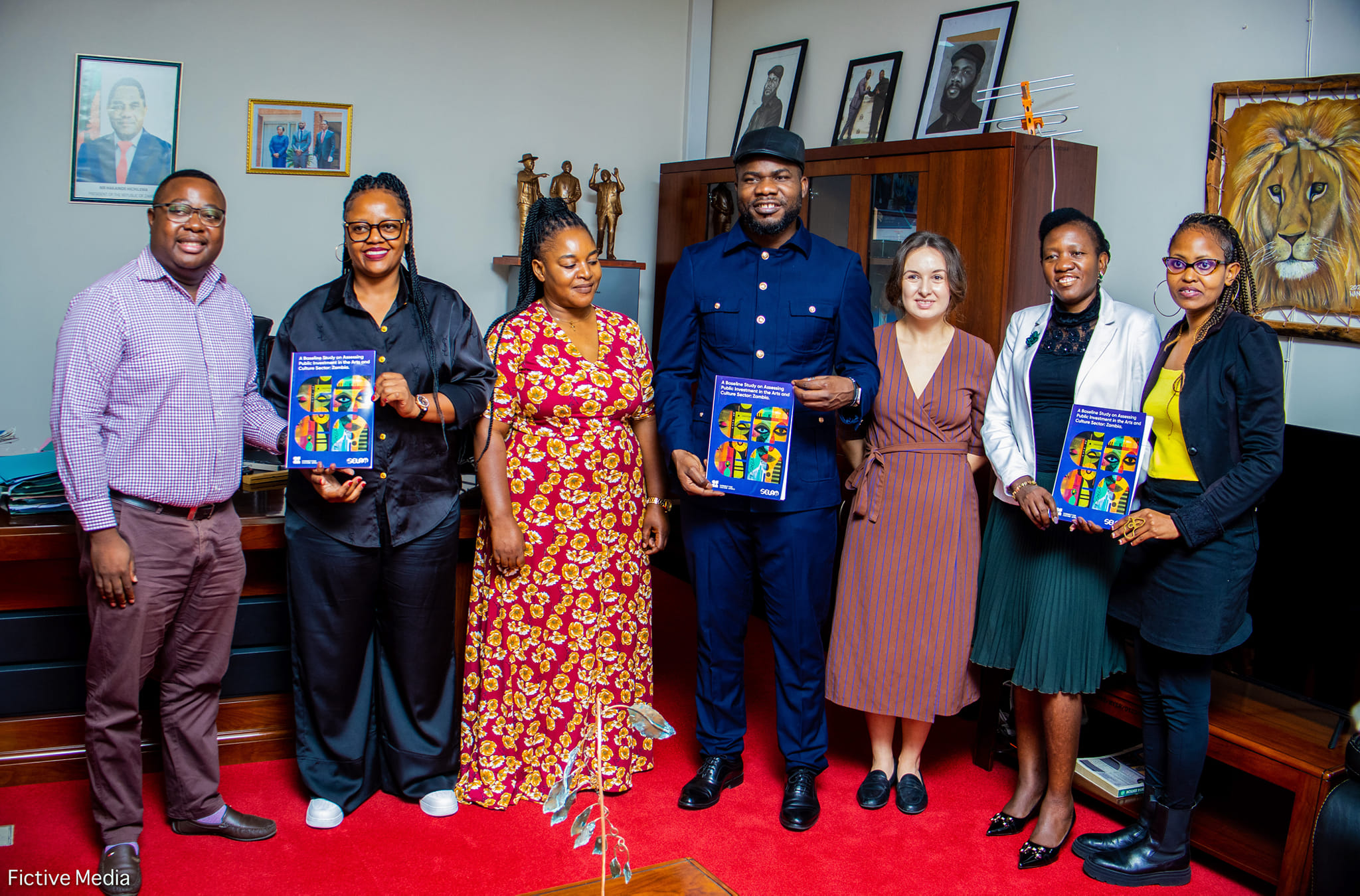For years, Zambia’s creative and cultural sector has been severely underfunded, consistently receiving less than 1% of the national budget over the past four years. Compared to other sectors like health, education, and mining, arts and culture remain a low priority for the Zambian government as reflected in the budgetary allocations over the years.
As global funding dynamics begin to shift, particularly the recent freeze or reduction in international development support from key international donors like the USAID, what does the future hold for a sector that already receives next to nothing and is barely recognized as an industry in Zambia?
In 2024, the health sector received K20.9 billion (about 11% of the national budget), yet still depended on donors for 40% of its financing. With that external funding now in question, government may be forced to reallocate domestic resources to keep the health system running. If a sector as vital as health is struggling to stay afloat, what will that mean for the creative industry, which already receives next to nothing?
As we look ahead to the 2026 national budget, the creative sector risks being further sidelined unless deliberate efforts are made to secure its place as a priority investment area.
A Snapshot of Public Investment in Zambia’s Arts and Culture Sector
Until 2021, the arts and cultural sector was housed under the Ministry of Tourism and Culture, before being moved to the Ministry of Youth, Sport and Arts in 2022. However, even with this transition, budgetary allocations have not significantly improved. Funding remains largely centralized and is categorized under ministerial and provincial allocations without dedicated budget lines that reflect the sector’s growth potential or needs.
This chronic underfunding has made the arts and culture sector almost invisible in fiscal priorities, receiving a fraction compared to sectors like health and education. Moreover, the sector’s contribution to Zambia’s GDP has stagnated around 0.3%, and its contribution to employment sits at just 0.6%. These figures not only reflect the lack of investment but also demonstrate the urgent need for strategic reform, increased budgetary support, and better coordination across institutions.
So, What Can Be Done?
Zambia’s creative and cultural sector has massive untapped potential. It is more than just a “soft” sector nor a social one, it is a powerful economic driver, source of employment, and tool for shaping national identity, public interest and public discourse. With the right investment and policy backing, it can significantly contribute to national revenue due to the untapped potential limited by its lack of formalization.
Let’s look at Nigeria for inspiration.
A Case Study in Emerging Public-Private Investment
Nigeria’s creative and cultural industries contribute approximately 2.3% to the country’s GDP, driven by a combination of private-sector innovation and targeted public initiatives. Through programs like Project Nollywood, the Nigerian government has provided grants to support capacity building, equipment acquisition, and content production in the film industry.
In 2021 alone, Nollywood contributed $660 million to the Nigerian economy, according to the Nigerian Investment Promotion Commission (NIPC). By 2023, the entire entertainment and media sector was valued at $1.4 billion, with projections by PwC estimating growth to $13.89 billion by 2027, fueled by digital expansion, a youthful population, and the rise of streaming platforms (PwC, 2023).
To support this growth, the government, through the Creative Industry Financing Initiative (CIFI), launched in partnership with the Central Bank of Nigeria has offered low-interest loans of up to $83,000 for film production and $1.2 million for distribution, making financing more accessible for creative entrepreneurs. Additionally, while most infrastructure development has been spearheaded by private telecommunications companies, the government has played a supporting role in expanding internet access and laying fiber-optic networks, which are crucial for digital content creation and distribution.
The Takeaway for Zambia
Zambia can draw valuable lessons from countries like South Africa and Nigeria, where the growth of the creative and cultural sectors is increasingly driven by deliberate government strategies and targeted public investment. In both cases, public funding is treated not as charity, but as a strategic economic investment with measurable returns. For example, in South Africa, the Department of Sport, Arts and Culture has introduced the Mzansi Golden Economy strategy, which aims to reposition the arts, culture, and heritage sector as a significant contributor to national development. This strategy is backed by diverse funding mechanisms such as the National Arts Council (NAC), which provides grants to both organizations and individuals across disciplines, and the Creative Industries Stimulus Programme, which supports job creation particularly through the placement of artists in schools and community settings. These initiatives reflect a broader understanding of the creative economy as a viable engine for employment, innovation, and cultural preservation.
For Zambia to unlock the potential of its creative economy, it must prioritize consistent and meaningful government funding, alongside strong policy frameworks that protect intellectual property and support fair content monetization, accessible financing for creatives, and improved infrastructure especially in internet connectivity and digital tools.
As global funding priorities continue to shift, Zambia must position the creative industry as a key pillar of economic diversification, not merely a cultural afterthought. Investing in arts and culture will not only enrich national identity and create employment, particularly for the youth but will also contribute measurable value to the country’s GDP and broader economic growth. The time for bold and deliberate action is now.



